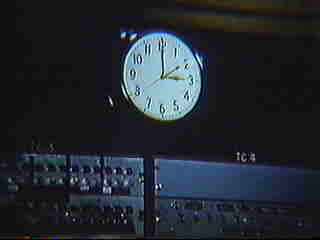 315 315 |
It is just about time to run my program. |
 316 316 |
My tape is inserted in the photoelectric reader, |
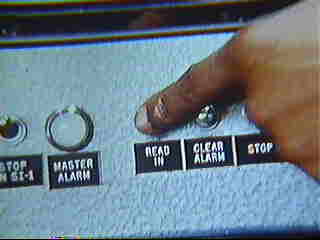 317 317 |
and read into Whirlwind's storage element. |
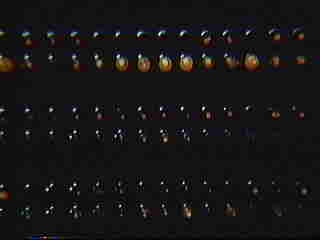 318 Note 318 Note |
Computations are proceeding at the rate of about thirty thousand arithmetic
operations per second, too fast to follow on the panel lights that show
the moment-by-moment results of the calculations. |
 319 319 |
Apparently there is a mistake in my program. I suppose this is not unusual
for new programmers. When a program fails, the computer has been programmed
to furnish sufficient information to enable the programmer to trace the
source and nature of his trouble. [splice] mistakes the programmer might
otherwise have found only after several days of checking. |
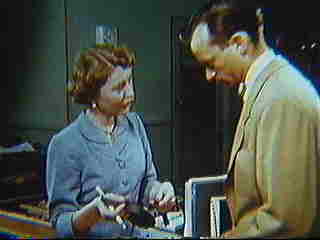 320 320 |
[Tape supervisor] The night's run's completed, the operator has returned
all the forms and results to the tape preparation room. During the five
hours available to the applications group each day, as many as one hundred
programs may be run on the computer. Later we will file a copy of the performance
results, film negatives, and tapes. A duplicate of the performance results
is made available to the programmer.
Invariably, programmers attribute the initial unsuccessful performances
of their programs to tape errors or to computer malfunctions. Sometimes
they are right, but usually I can assure them that the tape contains no
typographical errors.
Ordinarily, programmers are discouraged from taking tapes from the tape
room, because of the possibilities of loss or damage to the tape. |
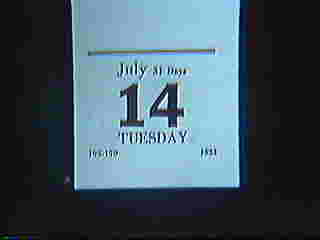 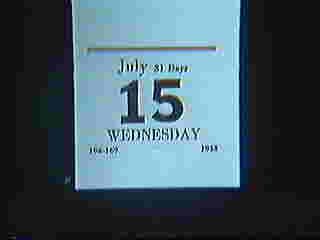 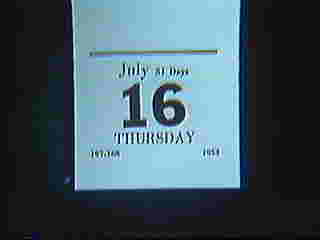  321a, b, c, d
Note 321a, b, c, d
Note |
Now back he goes to more studying and complete analysis of his difficulties. |
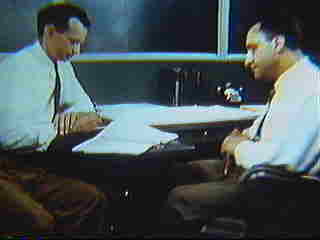 322 322 |
During the past few days, with the aid of the information obtained in my
first run, I have corrected several mistakes, some careless, some obscure.
After a final check by my staff consultant, I shall be ready for another
computer run. He agrees with my modifications and with my decision to run
the program again after these modifications have been put on tape. |
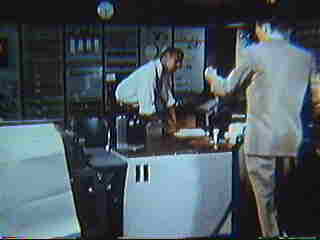 323 323 |
I'm beginning to feel like an old hand at this thing. But why must they
run computers at four o'clock in the morning?
First the operator reads the main tape into the computer, and then he
reads in the short tape which contains the modifications. |
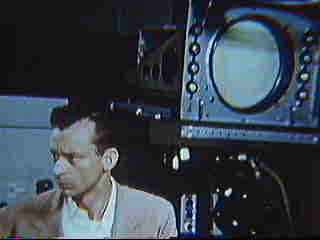 324 324 |
Say! What's going on here? Something must be wrong with the oscilloscope!
The operator advises me to face facts and check my program again. |
The MIT Museum has kindly granted permission for me to reproduce these
extracts from the 1953 film on MIT Project Whirlwind,"Making Electrons
Count." The permission is governed by an agreement between Daniel P.
B. Smith and the MIT Museum, and covers publication at this Web site only.
Individuals may view this material at this Web site, http://world.std.com/~dpbsmith/.
Any other use requires permission from the MIT Museum, 265 Massachusetts
Avenue, Cambridge, Massachusetts 02139-4307.
The original film credits contain no date or copyright notice and reads,
in full:
The Digital Computer Laboratory of the Massachusetts Institute of Technology
Presents "Making Electrons Count: Solving a Problem on M.I.T.'s Electronic
Digital Computer 'Whirlwind I.' Sponsored by: Office of Naval Research.
Physicist played by Dean N. Arden. Script by Edwin S. Kopley. Photographed
and Directed by Lloyd G. Sanford.
--Daniel P. B. Smith, http://world.std.com/~dpbsmith/
 315
315 316
316 317
317 318 Note
318 Note 319
319 320
320


 321a, b, c, d
Note
321a, b, c, d
Note 322
322 323
323 324
324